Rig tour: Korn
Up-close with Head and Munky's guitar gear
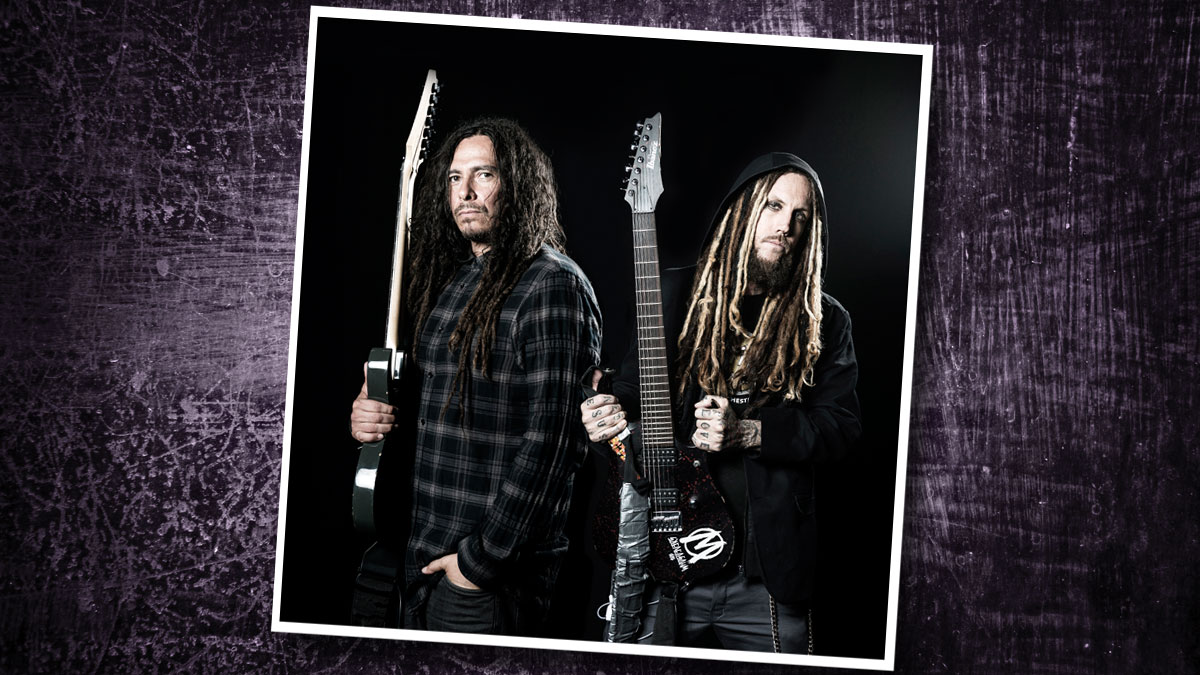
Introduction
Hitting the road to celebrate the legacy of their game-changing debut, Korn guitarists Munky and Head invite us to peruse their touring setups…
Few bands can legitimately claim to have paved the way for a new wave of popular music in the way that Korn can. Their debut arrived in 1994 as a breath of fresh air that reinvigorated heavy music, giving metal some much-needed unpredictability at a time when it felt like even the thrash gods themselves had lost their fiery thunder.
And wielding the kind of Ibanez seven-string machines you’d associate with master shredders, guitarists Munky and Head rewrote the rulebook with their focus on the riff itself.
Incredibly, that debut self-titled record sounds just as impactful today, perhaps even more so in hindsight of how those earth-shaking, down-tuned chords shaped heavy music to come.
Bands came and went, scenes tried and died; but Korn simply endured. And now, performing their first album in full to mark its anniversary, we catch up with the guitarists to find out the secrets to their classic sound…
Korn play Download Festival on Friday 10 June.
Don't Miss
James 'Munky' Shaffer talks Korn's debut album track-by-track: "It blew people away"
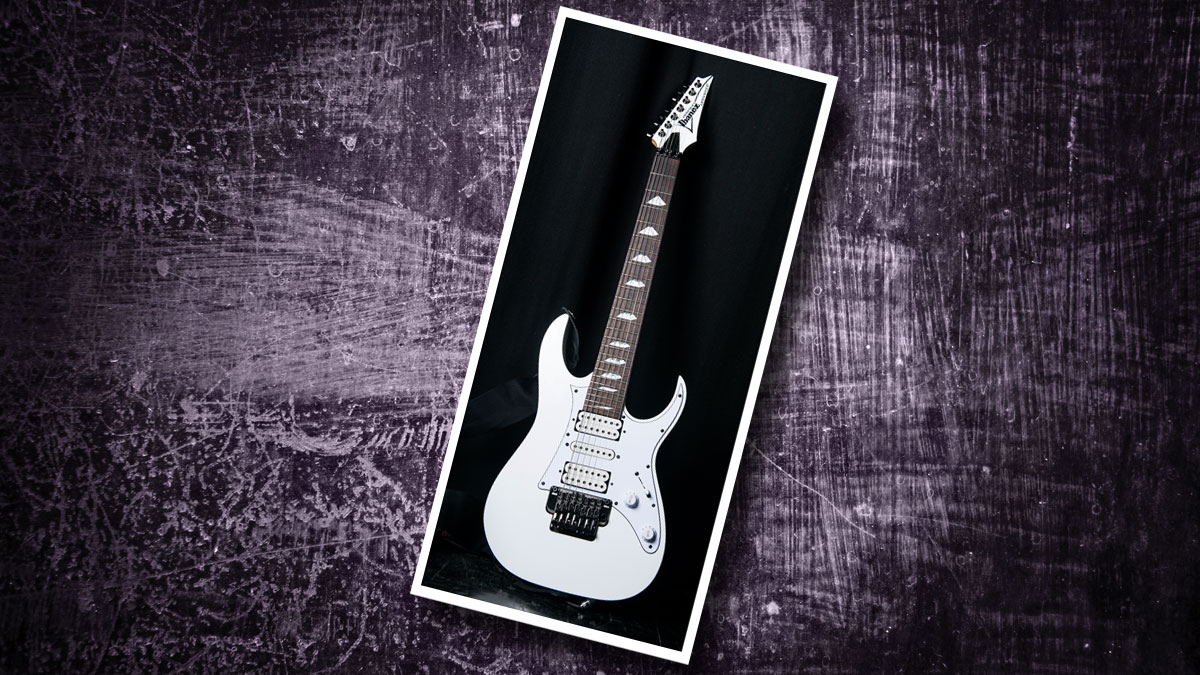
Ibanez UV7
Munky: “I was 21 when I first started playing seven-strings, it was back when Steve Vai had just released Passion And Warfare and I think Ibanez put out this guitar, the Swirl and the black one with the green pickups [the Universe - Ed]. But it was always the white one that I loved.
“I was working at a shitty job at the time, but I put $100 away every two weeks and had it on layaway for six months. This is a reissue of that guitar, my original is in pieces after being broken down several times. This one actually plays better, I think they refined it.
“As for the pickups, these are just stock Ibanez pickups in there, the neck is really nice for clean tones. It cuts the dB a little bit, but has that warm Telecaster sound. I’m using this for the whole first album set, as it’s the anniversary of that album, then switch to my Ibanez custom Apex signature.”
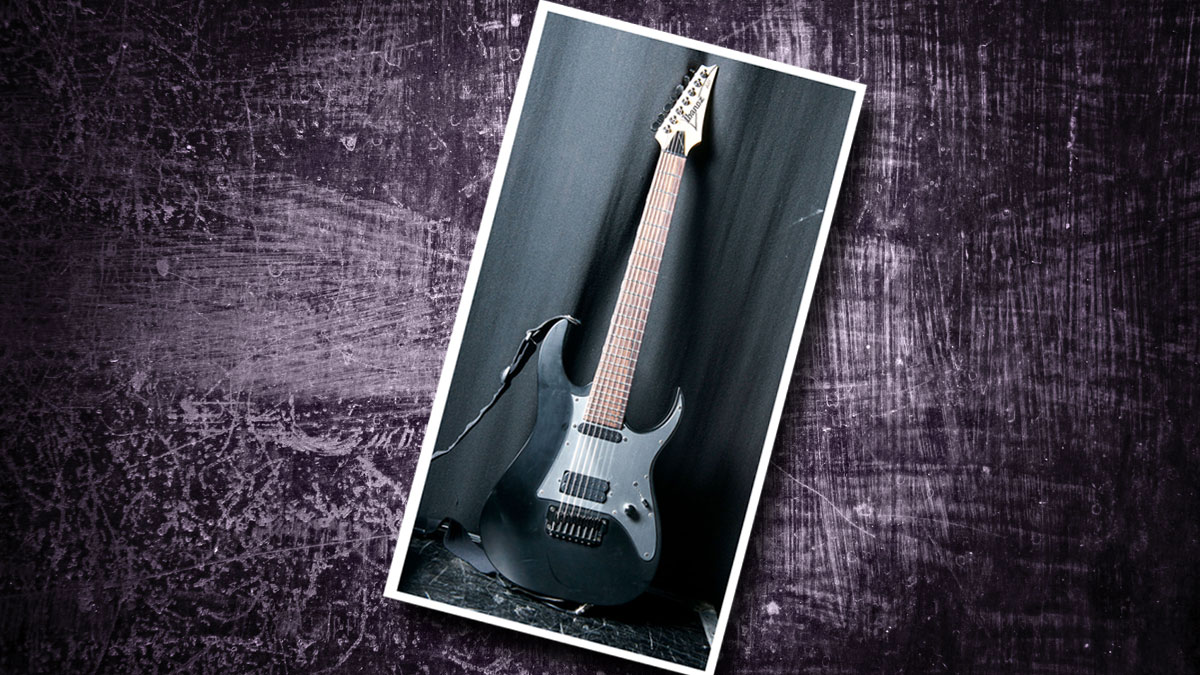
Ibanez APEX200
Munky: “And here’s my signature APEX200 guitar made by Ibanez. The guys over there helped me come up with it, as I wanted more of an affordable model for people with less money.
“Signature models can get really expensive - like Tosin Abasi’s eight-string, which is a beautiful guitar but also really expensive. And the Meshuggah eight-strings are like $5,000. We wanted to make something accessible and super basic.
“I figured, let’s make it look like an airplane with the stainless-steel pickguard and stick with the traditional metal colours: red, grey and black. I wanted more of that Telecaster sound, so we used a DiMarzio Blaze single-coil in the neck and the humbucker in bridge.
“My tech put big glow dots on it, because quite often, you can’t see until your eyes and pupils have dilated to the light on stage. And on some models, I’ve switched my neck pickup out for a [Fernandes] Sustainer, which I started using around the Issues/Untouchables era.”
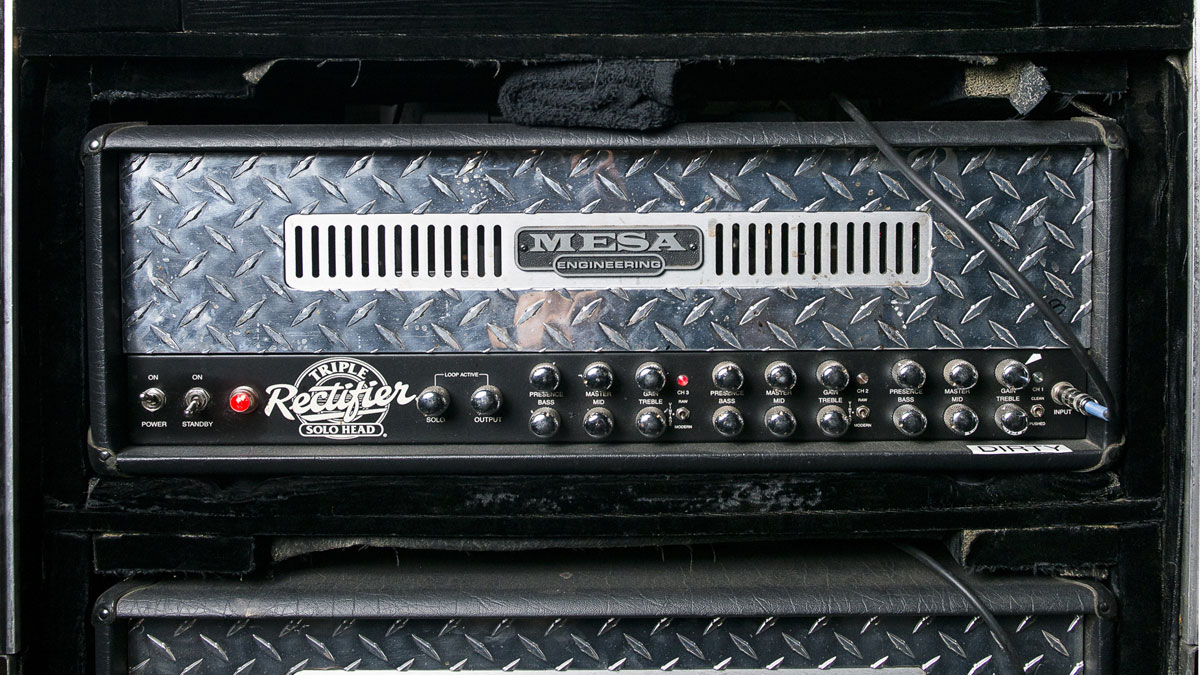
Mesa/Boogie Triple Rectifier
Munky: “Back when we were starting to record, these Mesa/Boogie Triple Rectifiers gave us a lot of what we needed. That low end was so important, and then we’d crank up the midrange for more definition. Plus, there’s plenty of gain, too!
“We tried Diezel amps on the road, they sound so good in the studio, but they don’t like getting moved around. The Mesas are real workhorses and super reliable, though we don’t use them to record that much anymore: it’s mixture of Marshall, Bogner, Diezel and newer Peaveys.
“We’ve done some stuff with the Bogner Shiva, too. But the Triple Rectifiers get us what we need on stage. It’s not about replicating the tone on the record, but more about being a band performing those songs.
“I just added in a Kemper; I haven’t had much time to dig into it but we’re using them for clean sounds right now. It doesn’t move a lot of air, but that’s not what I’m trying to do with it. It’s a simple setup, to be honest. At least until you get to the pedalboard, which is where the real fun happens…”
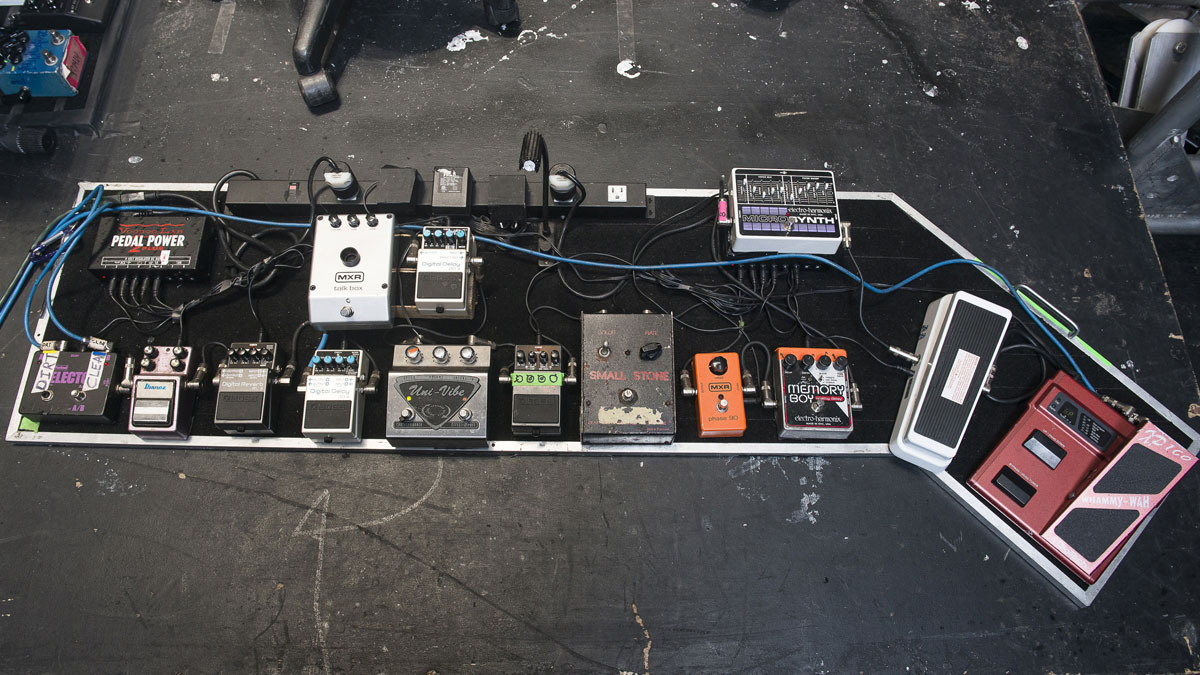
Jim Dunlop Cry Baby 105Q Bass Wah
Munky: “So this wah [pictured in white on the board above] is actually made for bass! [Laughs] But at least for me, it feels like you can get a better sweep on everything… because we use low tunings. So for our needs, it seems to work perfectly, and I also think it adds a little fuzz, too, near the top end.
“A lot of the stuff, I just like to have it out, because I’m oldschool. I want to adjust things and have some fun. When you’re playing night after night, you have to keep things interesting and mix it up. Do your own renditions, you know?
“If you play the right notes, it doesn’t really matter what effect or setting you’re on. It might even be some ear candy for the audience like, ‘Woah, that’s different!’”
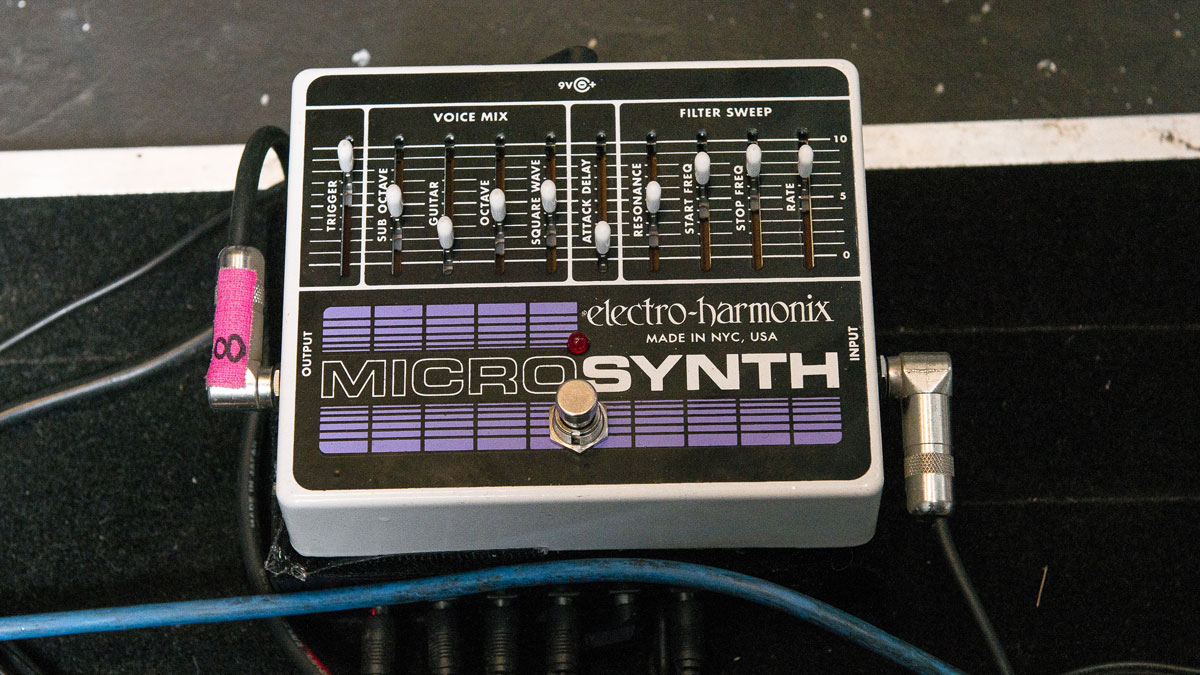
Electro-Harmonix Micro Synth
Munky: “The Micro Synth is pretty much my favourite pedal. If you listen to the last three Korn albums, you’ll hear it all over. I find they’re a great way to layer sound and add in this tractor sound, I’ve got a setting that sounds like a monster truck.
“I’ll tag it into the start and end of songs here and here, like the beginning of Here To Stay, so it has to be in my live rig! It’s a bit like a Trent Reznor, bitmangled sort of sound, with an octave that I add in for different parameters… it depends where I am on the neck.”
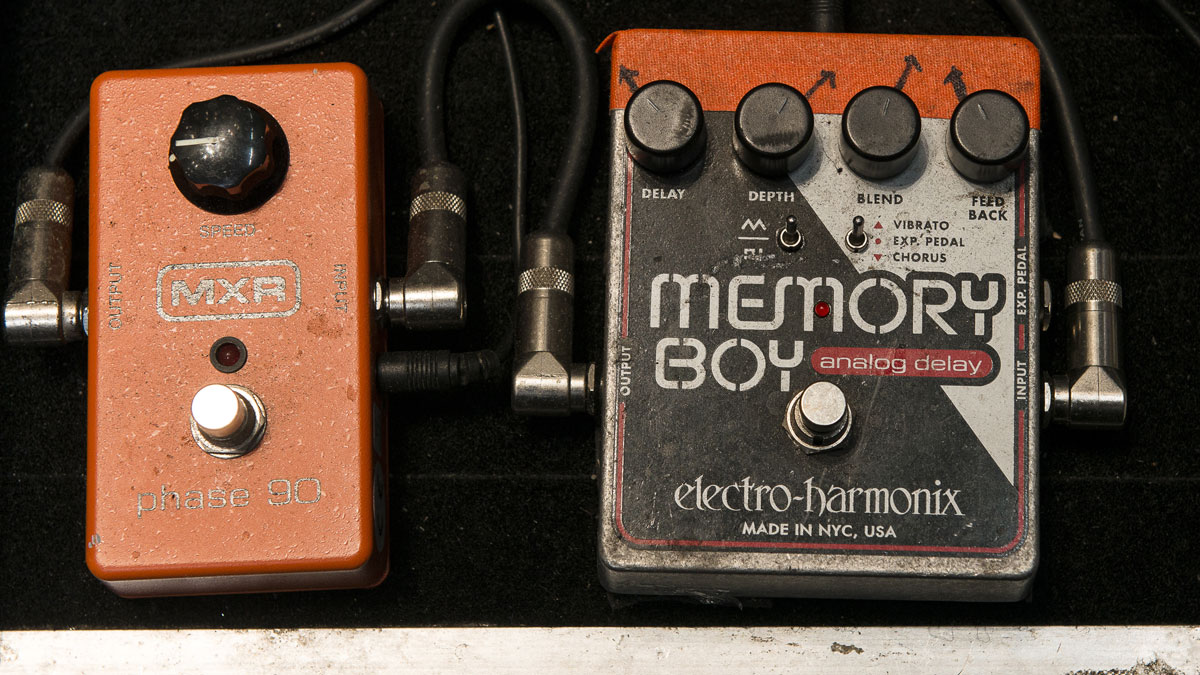
MXR Phase 90
Munky: “It just has that classic phaser sound. I’m not really that technical with it, I just find sounds and mark them.
“It’s no secret I’m not the greatest guitar player in the world, that’s okay! But when it comes to Korn songs, I am the greatest guitar player at that. Anything else, I’m crap at.
“For me, using all these pedals together in unison really changed things for us. This and the DigiTech [XP100] Whammy have been a staple in our setup since Follow The Leader.”
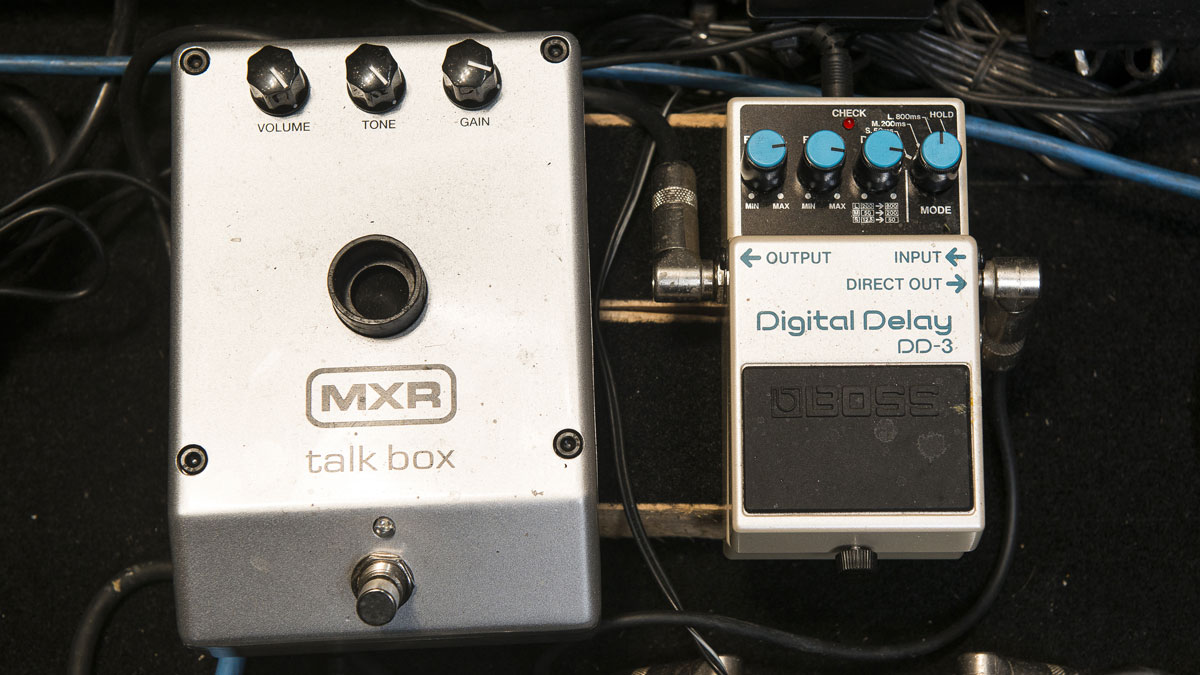
MXR Talkbox
Munky: “I use the Talkbox at the beginning of Dead Bodies Everywhere.
“This one had more gain compared to the others I had tried, it helped me get this feedback drone like a didgeridoo: this circular sound that would just go on and on. And I could just leave it going, which is pretty cool! It’s become a really important part of the songs it’s appeared on.”
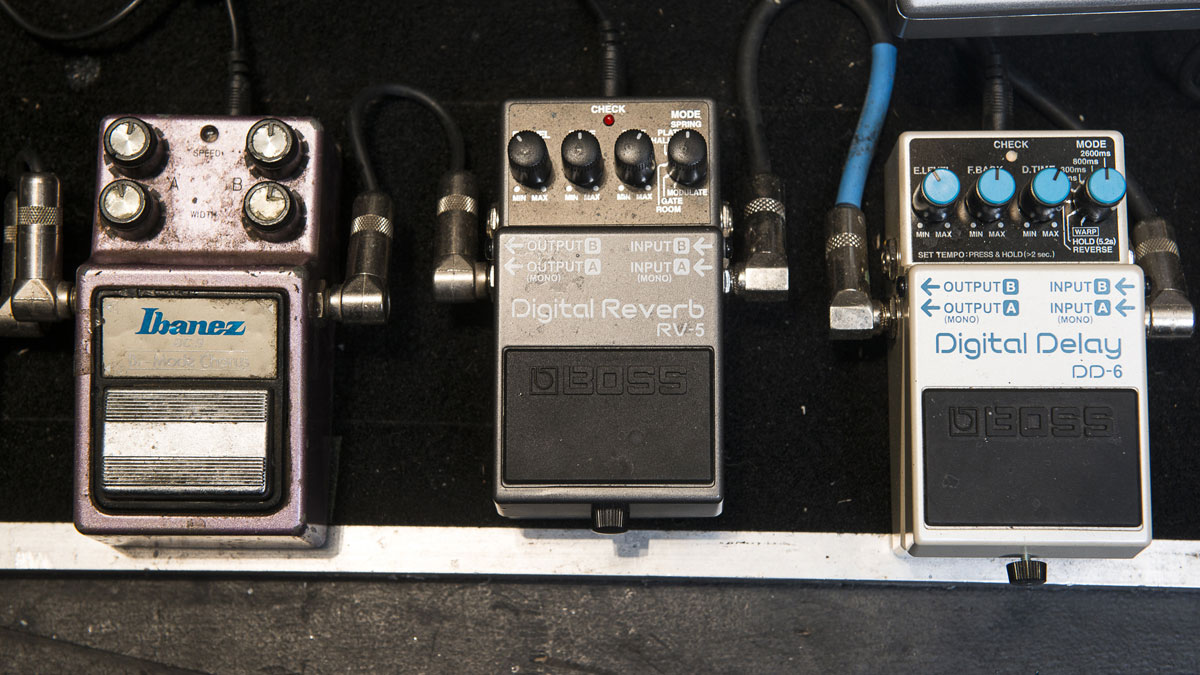
Ibanez BC-9 Bi-Mode Chorus
Munky: “This pedal has been on my pedalboard ever since the first Korn album. It’s this really fucked-up sounding chorus. You can hear it on the intro to Blind, it’s not supposed to be pretty sounding, it’s really wobbly and distorts, too… which is just wrong!
“I think there was a similar-looking Tube Screamer model that came out around the same time [the much-loved TS9 model - Ed]. I also use a UniVibe for a more rotary sound, it’s tough to find a better one but I’m not gonna be stupid and try to bring a Leslie out on the road!”
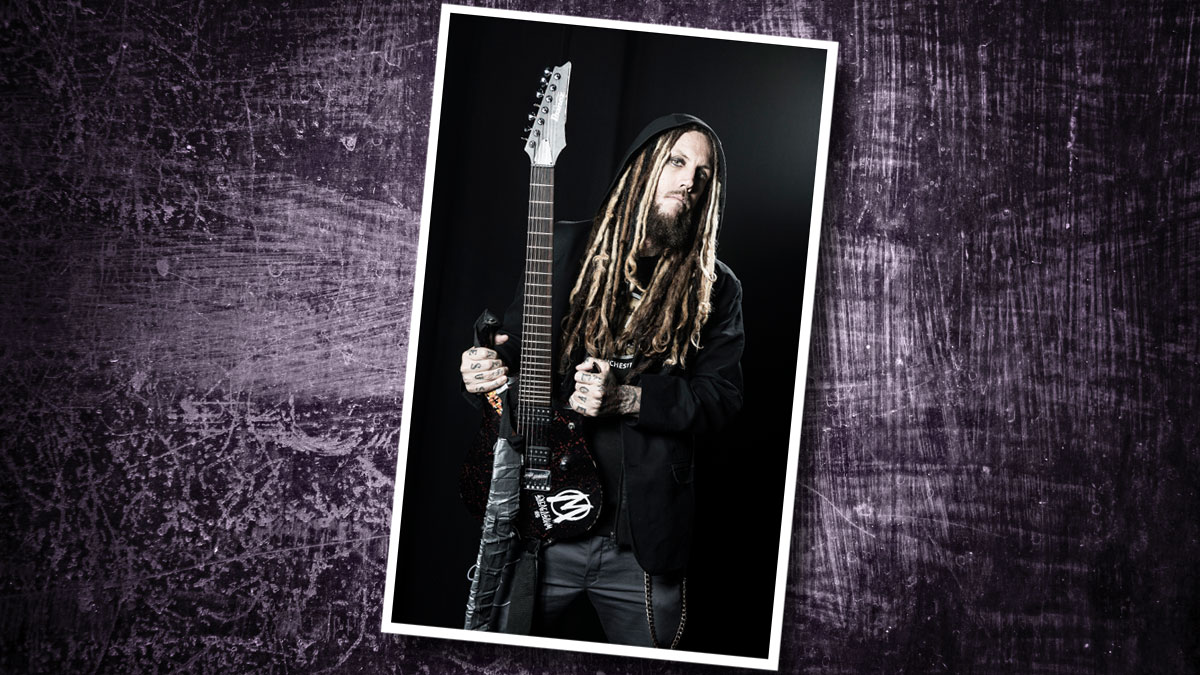
Ibanez KOMRAD20RS
Head: “This is the main guitar, my black-and-red Ibanez custom. And there’s a reason why I like it so much - the DiMarzio PAF 7 neck pickup sounds beautiful, both clean and dirty.
“I love the sound it makes on the clean part I play on Falling Away From Me. I don’t know why, it’s just got this response that works perfectly for our sound. There’s a rosewood fingerboard, maple neck… I don’t really remember the rest, it just works.
“Ibanez were the only company that gave us free guitars back in the day! They were the first to approach us, plus they made seven-strings too, so it made sense.”
Ibanez KOMRAD20RS
Head: “And this is my second go-to [same as above but white splatter finish].To be honest, I don’t like it as much… it definitely looks cool, but for some reason it doesn’t quite sound or play the same as my main one. They’re both tuned exactly the same so this is just the backup.
“Munky’s got more of the guitars, pedals and everything but I like to keep it as simple as I can. I prefer the music to the equipment, you know? I’m just not a gear head… but I probably should be! [Laughs]
“They’re great guitars, hats off to Ibanez. We’ve been playing eight-strings at home for the last few months, just writing and jamming, so coming back to seven-strings on tour feels like playing a regular six now.”
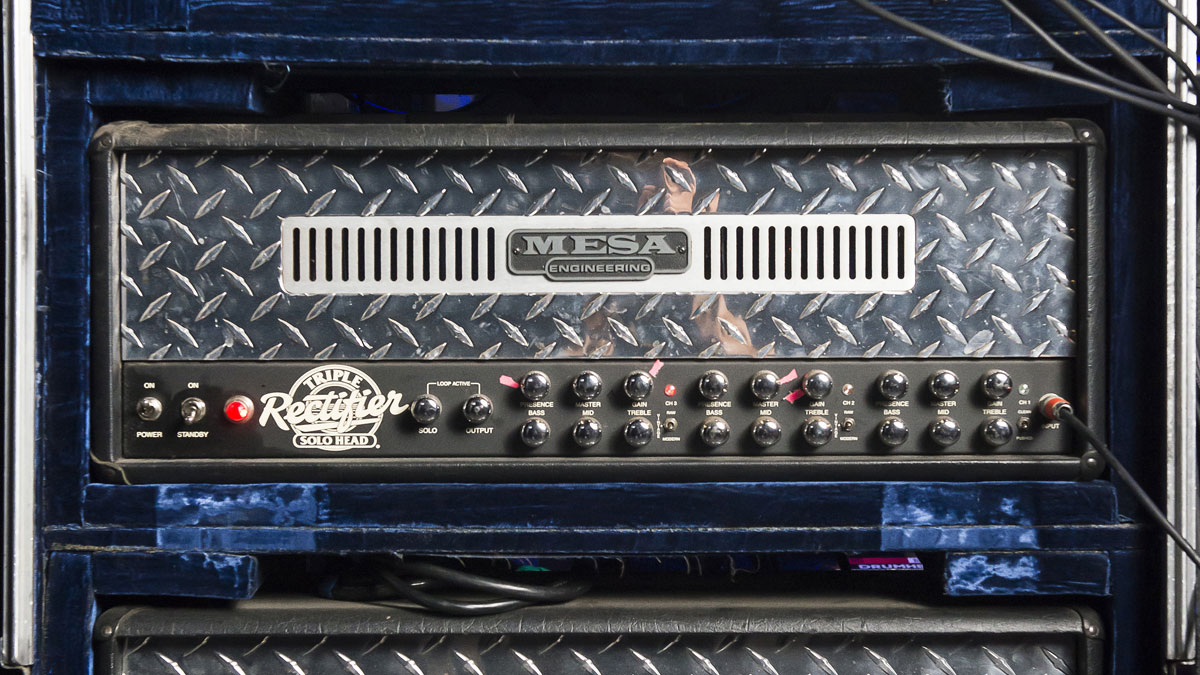
Mesa/Boogie Triple Rectifier
Head: “The Mesa/Boogies are very good, but I’m getting kinda sick of them. I’m ready for something new. I hope they don’t hate me for saying that! I love Bogner amps… they really bite.
“When I was out of Korn, those were the amps I would use. But the Triple Rec is an old faithful we’ve sworn by for so long… we’re old dogs doing the old tricks and it’s hard to change! I’ve also been thinking about Fractal Axe-Fx.”
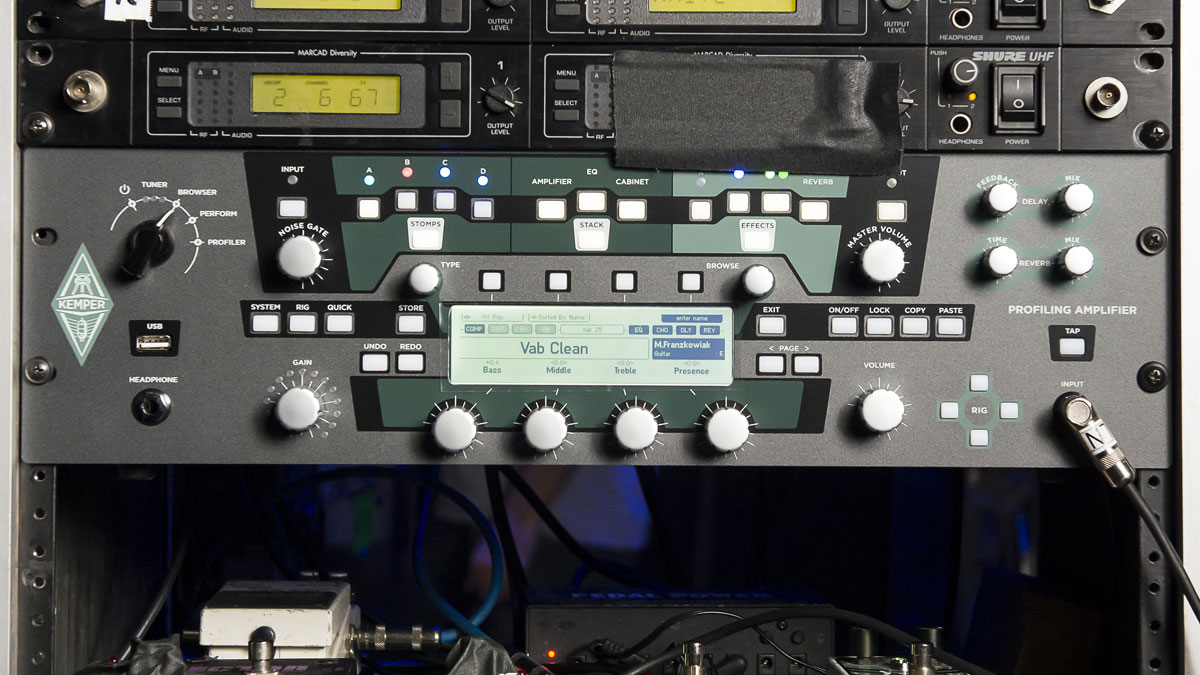
Kemper Profiling Amp
Head: “So I only found out today that I run my clean sounds from this Kemper profiler. I didn’t even know that, I thought it was through something else.
“This is our first tour using them and apparently the clean sound is more consistent, there’s no more fighting at the lower levels. You learn something new.”

Dunlop UV-1
Head: “They don’t make these Uni-Vibes [centre-right on board above] anymore, but I always thought they sounded great. I combine it with the reverb a lot, especially on tracks like Falling Away From Me and Here To Stay.
“That’s about as crazy as it gets for me - simplicity is key, each to their own right?! Some people just like the craziness, I guess. You’d be surprised how many songs are just the dirty channel for me, especially with the early stuff.”
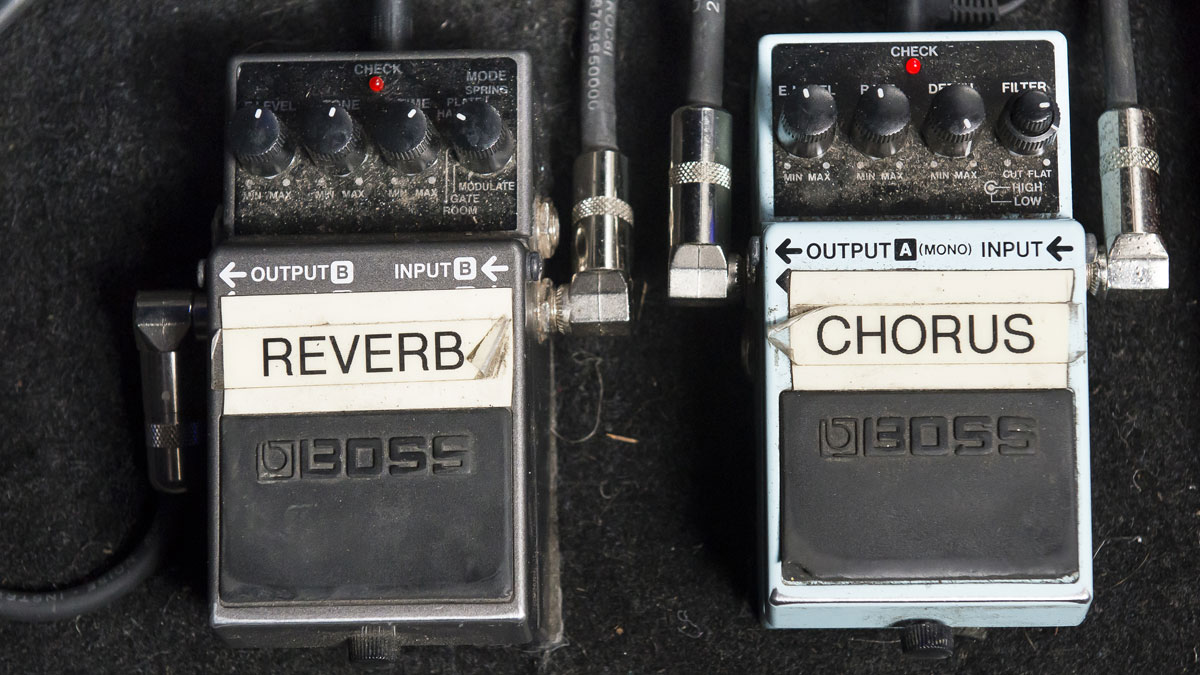
Boss RV-5
Head: “I don’t use any delay at all, but I’m a reverb fiend. The Boss RV-5 is a pedal I’ve stuck with since the beginning; it has this nice and clean reverb. But you know what I’ve found to be better? I only tried it out recently, but the Strymon BigSky totally rules!
“I tend to stick with about five pedals, it’s a pretty generic setup, but there’s less that can go wrong. I had a buzz going on the other day, and it didn’t take long to fix, but if it was coming from Munky’s rig it probably would have taken much longer!”
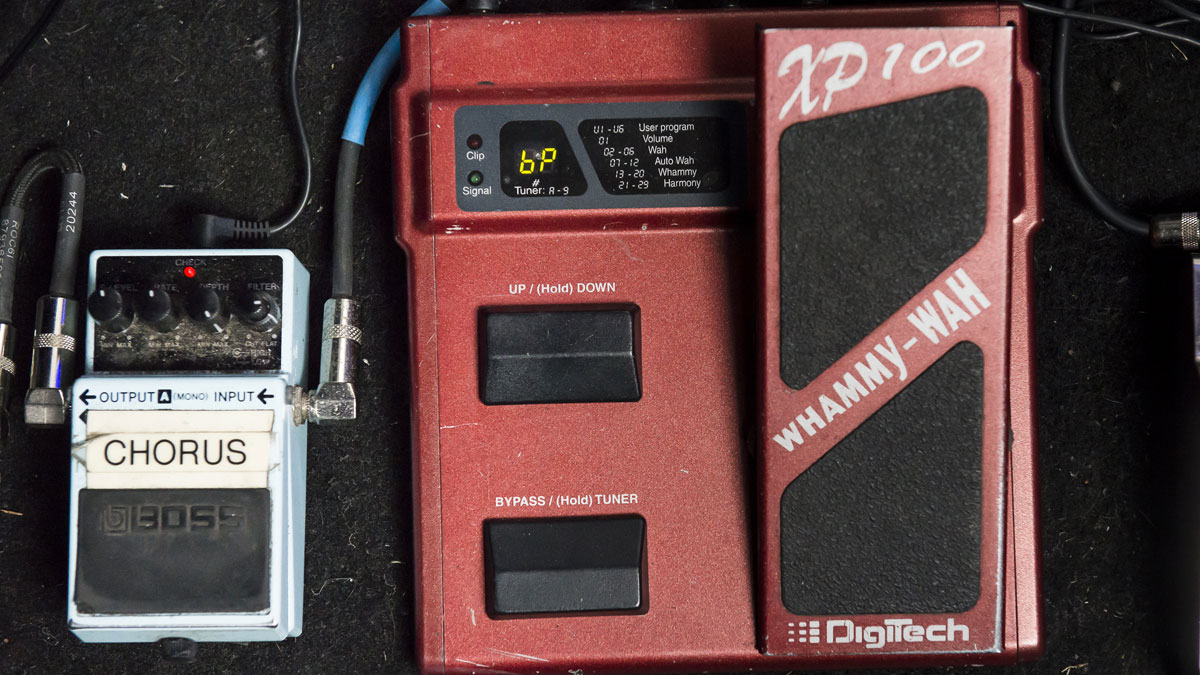
DigiTech XP-100
Head: “I’m not actually using this for any of the first album set because we didn’t have them back then - they came a few records later.
“So I’m using it during on songs like Here To Stay, where I kick in this lower octave to add more beef. And for some of my Freak On A Leash parts, I dial in one octave up.”
Don't Miss
James 'Munky' Shaffer talks Korn's debut album track-by-track: "It blew people away"
Amit has been writing for titles like Total Guitar, MusicRadar and Guitar World for over a decade and counts Richie Kotzen, Guthrie Govan and Jeff Beck among his primary influences. He's interviewed everyone from Ozzy Osbourne and Lemmy to Slash and Jimmy Page, and once even traded solos with a member of Slayer on a track released internationally. As a session guitarist, he's played alongside members of Judas Priest and Uriah Heep in London ensemble Metalworks, as well as handling lead guitars for legends like Glen Matlock (Sex Pistols, The Faces) and Stu Hamm (Steve Vai, Joe Satriani, G3).


